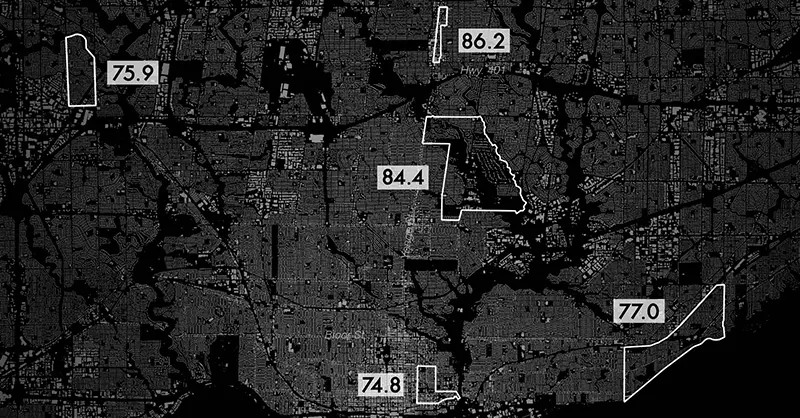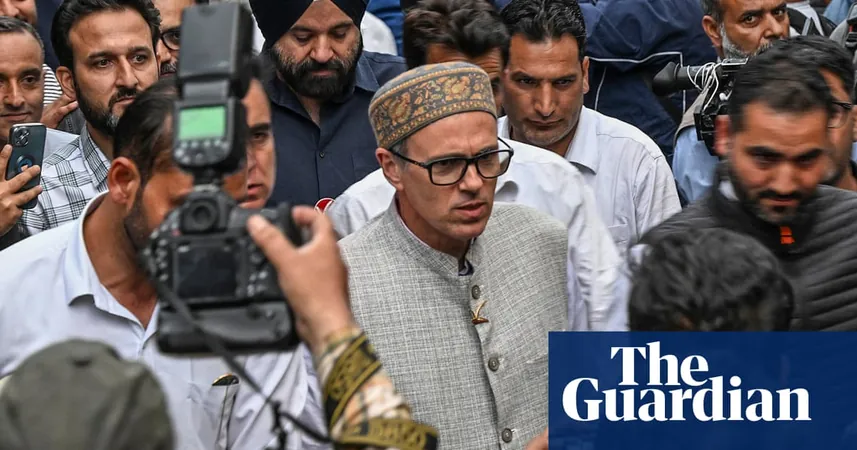
Shocking Life Expectancy Disparities Revealed Across Toronto’s Neighbourhoods
2024-10-08
Author: William
Shocking Life Expectancy Disparities Revealed Across Toronto’s Neighbourhoods
In an eye-opening study, new data indicates that life expectancy in Toronto varies by nearly 12 years depending on the neighbourhood. Residents of affluent areas such as Bridle Path, Bayview Village, and Willowdale can expect to live beyond 84 years—a statistic surpassing even Japan’s renowned longevity. In stark contrast, inhabitants of economically challenged regions like Rexdale, Oakridge, and Moss Park face life expectancies that fall more than a decade short, aligning their lifespans with those observed in countries such as Tunisia and Nicaragua.
These startling statistics emerged from a collaborative research initiative involving The Local and the MAP Centre for Urban Health Solutions at St. Michael's Hospital. Utilizing data from the 2021 census along with provincial death records from 2020 and 2021, the study examined life expectancy at birth across Toronto’s 158 neighbourhoods. This measure reveals how long a child born today in a specific area might live if current mortality trends persist.
The research sheds crucial light on the alarming levels of inequality plaguing Toronto. Life expectancy serves as a powerful indicator of disparity, illustrating the harsh realities of life in different socio-economic strata. The trends exhibited a familiar U-shaped pattern, echoing findings from previous surveys. The wealthier corridors along Yonge Street showcased extended lifespans while less affluent areas floundered, reminiscent of socio-economic divisions found in major American cities like Chicago and New York.
Dr. Stephen Hwang, a researcher focusing on health disparities and housing at St. Michael's Hospital, articulated the disparity succinctly: “Wealth brings privileges, and one of them is longer life.” Such inequalities manifest in places like Moss Park, where an infant born today can anticipate a mere 74.8 years of life—substantially lower than the city-wide average of 80.9 years. Moss Park, grappling with ongoing poverty alongside the dual crises of the COVID pandemic and drug addiction, epitomizes how socio-economic factors heavily influence health outcomes.
While wealth is a critical determinant of health, the study also unveiled some unexpected findings. The North York neighbourhood of Yonge-Doris boasts Toronto's highest life expectancy at 86.2 years. This area, characterized by high-density condominium living and excellent transit access, stands out due to its demographic composition, featuring a significant immigrant population—64% of residents—many of whom are economic migrants. This trend could illustrate the “healthy immigrant effect,” which posits that immigrants often arrive with better health status compared to local populations.
The data paints a troubling picture of Toronto, where rising housing costs further entrench these disparities. In an ideal society, all neighbourhoods would offer equal opportunities for health and longevity. However, as Dr. Hwang notes, it’s unrealistic to expect complete equality in wealth and income. Instead, there is a call for intentional efforts to ensure that one’s birthplace doesn’t dictate their life expectancy.
Laura Rosella, a professor of epidemiology at the University of Toronto, reinforces the need for systemic changes to prevent avoidable deaths and improve health outcomes across the socioeconomic spectrum. The goal going forward should focus on apportioning these insights into actionable strategies that policymakers can implement.
Looking internationally, New York City serves as an inspiring model. Recently, city officials unveiled a plan aimed at raising life expectancy to at least 83 years by 2030. Their initiative, HealthyNYC, emphasizes the interconnectedness of public health with transportation, education, and housing, highlighting the need for a collective approach to improve city dwellers' health.
In contrast, Toronto finds itself at the nascent stage of addressing these critical discrepancies. As Dr. Hwang indicates, transforming data collection into meaningful action is crucial for public health strategies to address these challenges effectively.
Life expectancy not only measures public health but serves as a lens through which society's inequalities are revealed. It brings to light the pressing need for greater accessibility to resources like education and healthcare—factors that contribute significantly to mortality rates. As Toronto progresses, the hope is that these alarming figures will catalyze meaningful discussions and transformative actions on a community level.
Will Toronto heed this wake-up call? Only time will tell, but as experts emphasize, it’s crucial we don't ignore these indicators any longer!









 Brasil (PT)
Brasil (PT)
 Canada (EN)
Canada (EN)
 Chile (ES)
Chile (ES)
 España (ES)
España (ES)
 France (FR)
France (FR)
 Hong Kong (EN)
Hong Kong (EN)
 Italia (IT)
Italia (IT)
 日本 (JA)
日本 (JA)
 Magyarország (HU)
Magyarország (HU)
 Norge (NO)
Norge (NO)
 Polska (PL)
Polska (PL)
 Schweiz (DE)
Schweiz (DE)
 Singapore (EN)
Singapore (EN)
 Sverige (SV)
Sverige (SV)
 Suomi (FI)
Suomi (FI)
 Türkiye (TR)
Türkiye (TR)